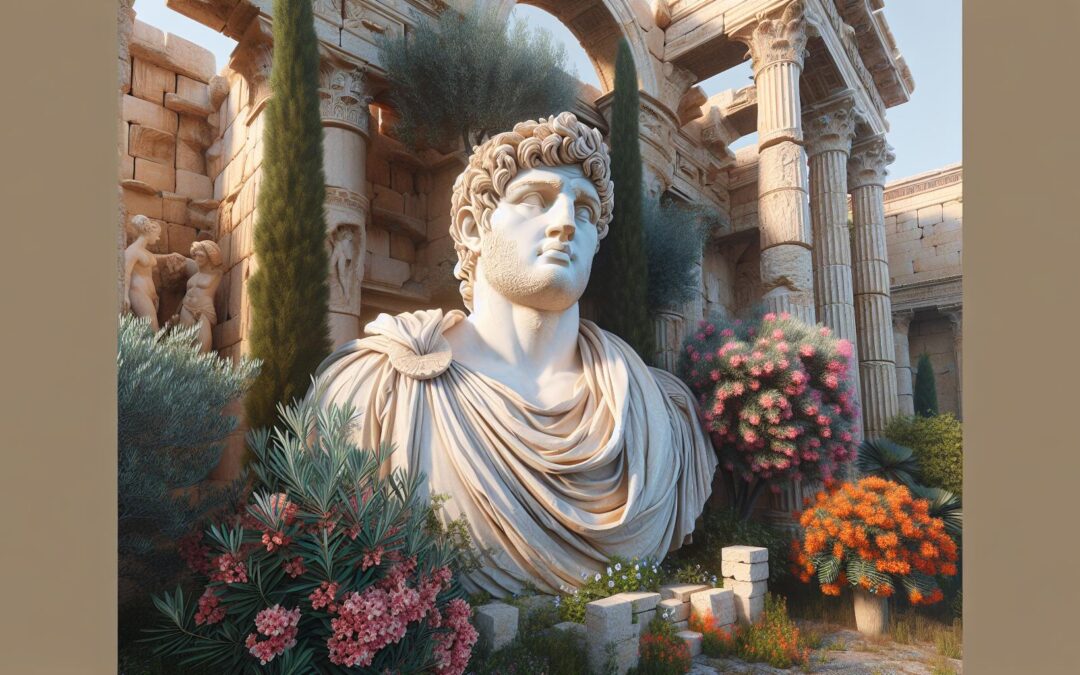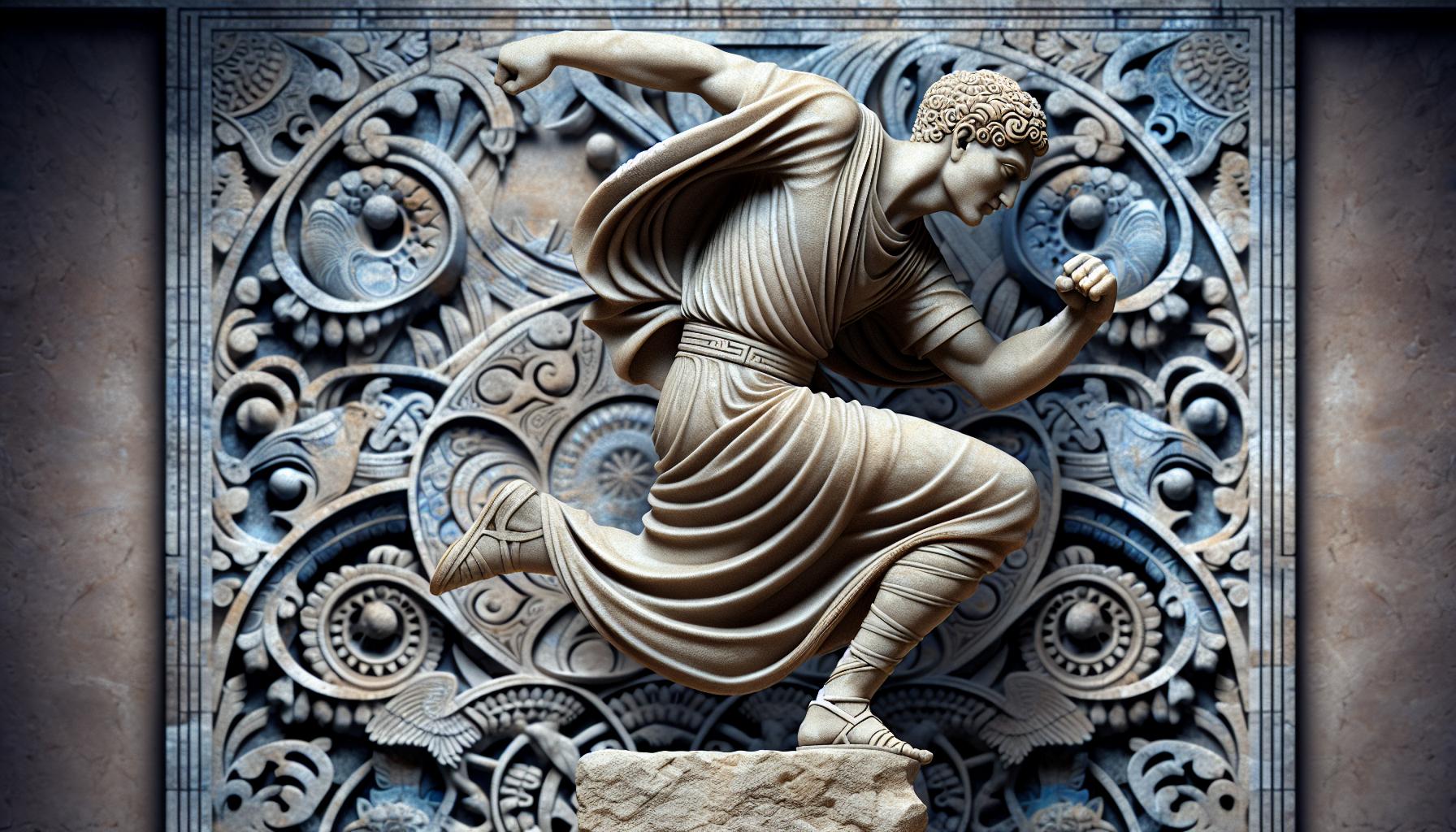The last phase of Greek art, known as Hellenistic art, marks a pivotal moment in history where artistic expression flourished alongside the expansion of Greek culture eastward. This era, spanning from the death of Alexander the Great in 323 BCE to the rise of the Roman Empire, showcases a profound evolution in artistic techniques and themes. Hellenistic art reflects the diverse influences and cultural exchanges that occurred as Greek civilization spread across the Mediterranean and into Asia. Artists embraced realism and emotion, capturing the complexities of human experience in their works. As they pushed artistic boundaries, they laid the groundwork for future artistic movements, making Hellenistic art a significant chapter in the story of Western art history.
What is the Last Phase of Greek Art That Also Refers to the Spread of Greek Culture Eastward?
Greek art evolved through distinct phases, each representing unique cultural and historical developments. The primary phases include:
- Geometric Period (c. 900-700 BCE)
- Characterized by geometric patterns and motifs in pottery.
- Focused on abstract shapes and limited human representation.
- Archaic Period (c. 700-480 BCE)
- Marked the introduction of more naturalistic forms.
- Featured the kouros and kore statues, showcasing idealized human figures.
- Classical Period (c. 480-323 BCE)
- Emphasized proportion, balance, and harmony in art and architecture.
- Produced iconic works like the Parthenon and sculptures by Phidias, demonstrating advanced techniques and realism.
- Hellenistic Period (c. 323 BCE-31 BCE)
- Synonymous with the spread of Greek culture following Alexander the Great’s conquests.
- Notable for its emotional expressiveness and intricate details in sculptures, such as Laocoön and His Sons.
These phases reflect the progression of Greek art, illustrating a shift from abstract designs to detailed realism and emotional depth. Hellenistic art represents the culmination of this evolution, merging local styles with Greek ideals across diverse regions.
The Last Phase of Greek Art
Hellenistic art represents the last phase of Greek art, showcasing a blend of local styles and Greek influences. This era highlighted the expansion of Greek culture, achieving unprecedented levels of artistic expression.
Characteristics of the Final Phase
Hellenistic art is defined by several key characteristics:
- Realism: Artworks display heightened levels of realism, capturing accurate human anatomy and lifelike expressions.
- Emotional Expression: Artists emphasize emotional depth, showcasing a range of feelings in their subjects.
- Dramatic Composition: The use of dynamic poses and intricate details adds drama to sculptures and paintings.
- Diversity in Subjects: Works portray a broad array of subjects, including mythological scenes, everyday life, and representations of diverse cultures.
- Local Influences: Art integrates regional styles, showing how Greek culture assimilated and transformed local artistic traditions as it spread eastward.
Influential Artists and Works
Several artists and works emerged during the Hellenistic period that played significant roles in shaping this artistic phase:
- Lysippos: An influential sculptor known for his unique approach to proportion and form, creating pieces like the Apoxyomenos, which depicted a male athlete cleaning himself after competition.
- Praxiteles: Renowned for blending realism and idealism, his work Aphrodite of Knidos became one of the earliest representations of female nudity in sculpture, influencing future depictions in Western art.
- Alfredo: The Winged Victory of Samothrace, a monumental sculpture celebrating naval victory, embodies dramatic movement and intricate details that characterize Hellenistic art.
- Chares of Lindos: The creator of the Colossus of Rhodes, this monumental statue exemplified the scale and grandeur Hellenistic artists achieved.
These artists and their works illustrate how the last phase of Greek art reflected the complexities of human experience, establishing foundations for subsequent artistic movements.
The Spread of Greek Culture Eastward
Hellenistic art marks a significant period in the expansion of Greek culture, particularly as it spread eastward following Alexander the Great’s conquests. This cultural diffusion facilitated the blending of Greek artistic principles with local traditions across various regions.
Historical Context and Influences
The Hellenistic era began after Alexander the Great’s death in 323 BCE and extended until the rise of the Roman Empire. His military campaigns opened pathways for trade and cultural exchange between Greece and regions such as Egypt, Persia, and India. This interaction fostered a rich exchange of ideas, styles, and techniques, leading to a distinctive synthesis in art and architecture. Greek artists assimilated foreign elements, creating works that exhibited both Hellenistic and local influences, which contributed to a more diverse and expressive art form.
Key Regions Affected by Greek Culture
The spread of Greek culture influenced numerous regions:
- Egypt: The establishment of Alexandria became a hub for Greek art, philosophy, and science, blending with ancient Egyptian styles. The Lighthouse of Alexandria and the Serapeum exemplify this fusion of Greek and Egyptian architecture.
- Persia: Following Alexander’s conquest, Persian cities began adopting Greek artistic styles while integrating local motifs. This led to the creation of monumental sculptures and public spaces reflecting Hellenistic aesthetics.
- Bactria: In Central Asia, Greek art melded with Eastern traditions, resulting in unique sculptures that displayed a mix of Greek and local features. This interaction is evident in the production of Gandharan art, which incorporates Indian and Hellenistic influences.
- Asia Minor: Hellenistic culture flourished in cities like Ephesus and Pergamon, evidenced by grand structures such as the Altar of Zeus, which showcased advancements in architectural design and sculptural techniques.
These regions illustrate how the eastward spread of Greek culture significantly transformed local artistic landscapes, establishing a legacy that influenced subsequent artistic movements.
The Legacy of Greek Art and Culture
Hellenistic art and culture significantly shaped the trajectory of Western civilization, leaving an enduring legacy. Artistic achievements during this period emphasized realism, emotional depth, and the blending of local and Greek styles.
Key characteristics of Hellenistic art included:
- Heightened Realism: Artists focused on accurate human forms and lifelike representations.
- Emotional Expression: Works portrayed a wide range of human emotions, enhancing viewer connection.
- Dramatic Composition: The use of movement and dynamic arrangements created engaging visual experiences.
- Diversity in Subjects: Artists explored various themes, including mythology, daily life, and individual portraits.
- Integration of Local Influences: Hellenistic artists incorporated regional artistic styles, leading to unique hybrid forms.
Influential artists such as Lysippos, known for redefining proportion, and Praxiteles, who expertly merged realism with idealism, made significant contributions during this time. Iconic works like the Winged Victory of Samothrace and the Colossus of Rhodes exemplified the era’s artistic ambitions and innovations.
The spread of Greek culture eastward, driven by Alexander the Great’s conquests, further expanded the impact of Hellenistic art. Key regions significantly influenced included:
| Region | Key Contributions |
|---|---|
| Egypt | Alexandria emerged as a hub for artistic exchange. |
| Persia | Local motifs blended with Greek styles, creating fusion. |
| Bactria | Unique sculptures reflected a combination of cultures. |
| Asia Minor | Cities like Ephesus and Pergamon showcased architectural advancements. |
Trade routes and cultural exchanges fostered this synthesis, transforming local artistic landscapes. The legacy of Hellenistic art continued to resonate through the Renaissance and into modern artistic movements, solidifying its place in the foundation of Western art history. The Hellenistic period marked a pivotal moment in the evolution of Greek art and culture. Its emphasis on realism and emotional depth not only reflected the complexities of human experience but also facilitated a rich exchange of ideas across diverse regions. As Greek culture spread eastward, it left an indelible mark on local traditions, creating a unique synthesis that influenced future artistic movements. This era’s legacy continues to resonate in Western art history, showcasing how the blending of cultures can lead to profound advancements in artistic expression. The impact of Hellenistic art is a testament to the enduring power of cultural diffusion and its ability to shape the creative landscape for generations to come.


